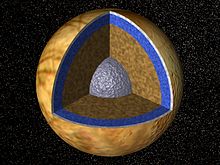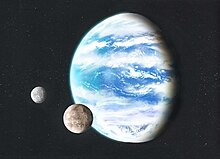I posted this as well.............repeatedly..........Nasa has already found many large, ocean planets.........water usually means life.........life on Earth........came from the oceans.........
Ocean planet
An ocean planet, ocean world, water world, aquaplanet or panthalassic planet is a type of terrestrial planet that contains a substantial amount of water either at its surface or subsurface.[1][2][3][4] The term ocean world is also used sometimes for astronomical bodies with an ocean composed of a different fluid,[5] such as lava (the case of Io), ammonia (in a eutectic mixture with water, as is likely the case of Titan's inner ocean) or hydrocarbons like on Titan's surface (which could be the most abundant kind of exosea).[6]
Earth is the only astronomical object known to have bodies of liquid water on its surface, although several exoplanets have


Comments
Post a Comment